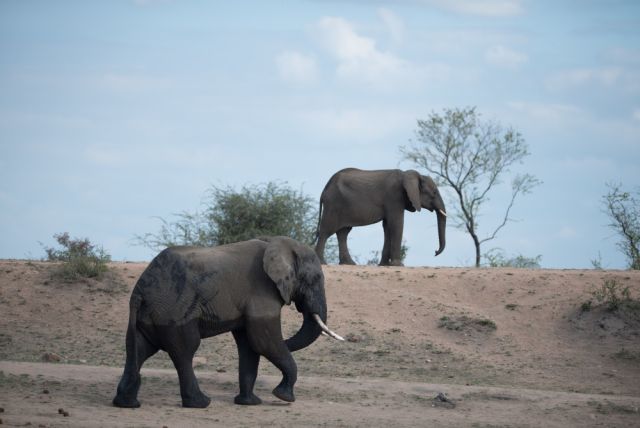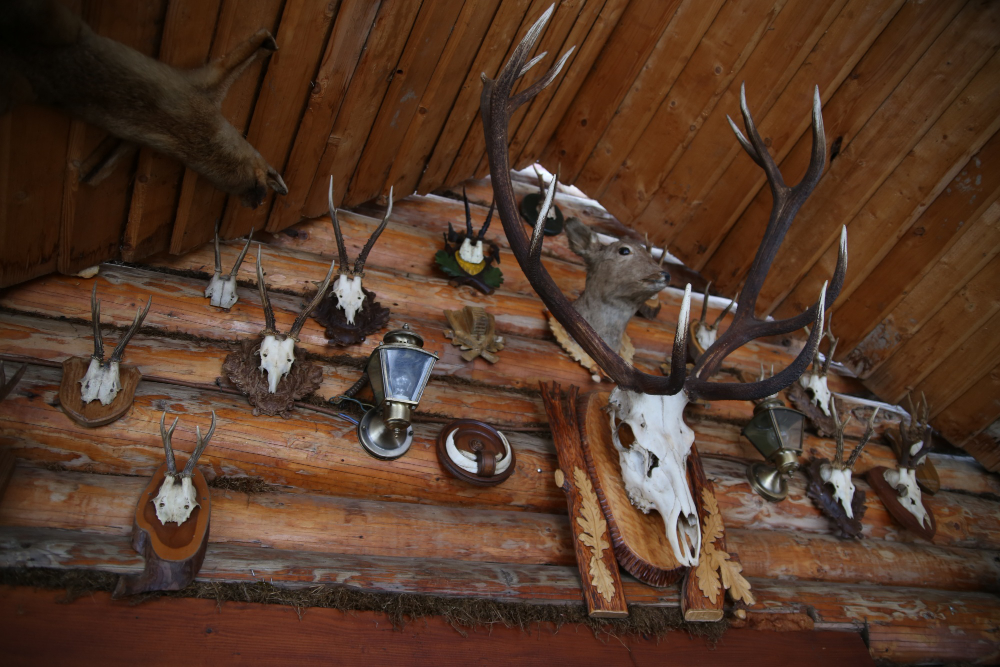Our Blogs
Art of Trophy Hunting
The art of trophy hunting encompasses a blend of skill, ethics, and conservation. It requires a deep understanding of wildlife, a commitment to fair chase principles, and the ability to make a significant contribution to conservation efforts. While it remains a contentious practice, when conducted responsibly and ethically, trophy hunting can play a role in preserving wildlife and supporting local economies.
Trophy hunting is a practice where hunters pursue and harvest wild animals with the goal of obtaining a trophy, usually in the form of the animal's head, horns, antlers, or hide. This form of hunting is distinct from subsistence or recreational hunting as it emphasizes the selective targeting of mature, often male, specimens that display exceptional physical characteristics.
Trophy hunting has a long history, with roots stretching back to ancient times when hunters would display animal parts as symbols of prowess and status. In the 19th and early 20th centuries, European explorers and colonialists popularized trophy hunting in Africa and India, often embarking on grand safaris. This era cemented the cultural image of the trophy hunter as an adventurer and conservationist.
Introduction to Hunting Tours
- The concept of hunting tours dates back to the late 19th and early 20th centuries when affluent individuals sought out big game hunts in Africa. Over time, the industry evolved to include a broader audience and a wider variety of game and locations.
- Hunting tours provide enthusiasts with the opportunity to experience hunting in a structured and often exotic environment, organized by professional outfitters.
- The appeal of hunting tours lies in the combination of adventure, skill, and the chance to hunt in diverse and often remote locations, offering an unparalleled experience for enthusiasts.
Explore South Africa
South Africa, often referred to as the "Rainbow Nation," is a country rich in diversity, both in its culture and its natural beauty. Located at the southern tip of the African continent, South Africa offers a plethora of experiences for travelers.
South Africa's blend of breathtaking landscapes, rich cultural heritage, and diverse wildlife make it a must-visit destination for travelers. Whether exploring bustling cities, embarking on a safari adventure, or enjoying the scenic beauty of its coastlines and mountains, South Africa promises an unforgettable experience.
Key Highlights
Natural Wonders
Kruger National Park:
One of Africa's largest game reserves, renowned for its Big Five game (lion, leopard, rhinoceros, elephant, and Cape buffalo) and diverse wildlife.
Table Mountain:
A flat-topped mountain forming a prominent landmark overlooking the city of Cape Town, accessible by hiking or cable car.
Garden Route:
A scenic coastal stretch featuring lush forests, pristine beaches, and charming towns, perfect for road trips and outdoor adventures.
Cultural Diversity
Cape Town:
Known for its stunning landscapes, vibrant arts scene, and historical sites such as Robben Island, where Nelson Mandela was imprisoned.
Johannesburg:
A bustling metropolis offering a mix of history, art, and modern attractions, including the Apartheid Museum and Soweto township.
Zulu Culture:
Experience traditional Zulu villages, with opportunities to learn about the customs, dances, and crafts of one of South Africa's largest ethnic groups.
Adventure Activities
Safari Tours:
Opportunities to explore various national parks and private reserves, with guided tours to see Africa's iconic wildlife.
Shark Cage Diving:
A thrilling experience off the coast of Gansbaai, where visitors can safely observe great white sharks in their natural habitat.
Historical and Heritage Sites
Robben Island:
A UNESCO World Heritage site that served as a prison during apartheid, offering guided tours that provide deep insights into South Africa's struggle for freedom.
Battlefields of KwaZulu-Natal:
Historical sites where major battles of the Anglo-Zulu and Anglo-Boer wars took place, with tours that delve into South Africa's military history.
Cradle of Humankind:
A paleoanthropological site that holds some of the oldest hominid fossils, offering fascinating insights into human evolution.
Beaches and Coastline
Durban:
Known for its Golden Mile beachfront, warm Indian Ocean waters, and vibrant cultural scene.
Wild Coast:
A rugged and untouched stretch of coastline offering dramatic scenery and secluded beaches, ideal for those seeking tranquility and natural beauty
The Art of Taxidermy
The Art of Taxidermy: A Blend of Skill, Science, and Respect for Nature
Taxidermy, the practice of preserving an animal's body for display or study, has a rich history that intertwines art, science, and cultural significance. While often misunderstood or viewed through a controversial lens, the art of taxidermy serves not only as a means to celebrate wildlife but also as an educational tool and a way to honor the natural world.
A Historical Perspective
The roots of taxidermy can be traced back to ancient civilizations. In Egypt, mummification techniques were employed to preserve animals, particularly for religious purposes. However, the modern practice began to take shape in the 18th century, with the advent of more refined methods and materials. Pioneers like John James Audubon and Charles Waterton helped elevate taxidermy to an art form, combining meticulous craftsmanship with a passion for natural history.
The Process of Taxidermy
The taxidermy process involves several steps, each requiring skill and attention to detail.
Preparation: The first step is careful preparation of the specimen. This often involves skinning the animal and preserving its skin, which is usually done with a combination of salt and chemicals to prevent decay.
Mounting: Once the skin is preserved, it is mounted onto a form that resembles the animal's original shape. This form can be made from various materials, including foam, wood, or metal.
Detailing: This stage involves recreating the animal’s features—adding eyes, painting details, and ensuring the fur or feathers are positioned correctly. It’s here that the taxidermist's artistic vision truly comes to life.
Finishing Touches: Finally, the mounted specimen is carefully arranged for display. Lighting and positioning can enhance the presentation, making the piece both aesthetically pleasing and educational.
Ethical Considerations
In recent years, the practice of taxidermy has faced scrutiny, particularly concerning ethical sourcing and conservation. Responsible taxidermists prioritize sustainable practices, ensuring that specimens are obtained legally and ethically—often through hunting regulations that manage wildlife populations. Furthermore, many taxidermists collaborate with conservation organizations to promote awareness and education about endangered species and environmental preservation.
The Art Form
Taxidermy is not merely a technical process; it is an art form that requires a deep understanding of anatomy, color, and texture. Skilled taxidermists can create lifelike representations that convey the spirit and essence of the animal. Artists often specialize in certain species, developing techniques to capture the unique characteristics of each.
Cultural Significance
Taxidermy holds a unique place in various cultures. In some Indigenous cultures, it is a way to honor the spirit of the animal, while in others, it is a means of preserving history and natural heritage. Museums around the world feature taxidermy exhibits that educate the public about biodiversity, conservation, and the beauty of the natural world.
Conclusion
The art of taxidermy is a fascinating intersection of skill, science, and respect for nature. It allows us to appreciate the beauty of wildlife while fostering a greater understanding of our environment. As conservation efforts continue to evolve, so too will the role of taxidermy in education and appreciation of the natural world. Whether viewed as a controversial practice or a celebrated art form, taxidermy remains a testament to our complex relationship with nature and our desire to connect with the wild.



 Categories
Categories Latest posts
Latest posts